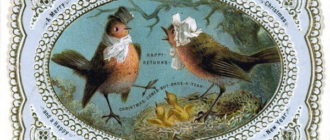
Painting Conquest of Siberia by Ermak Timofeevich by Vasily Surikov is a dramatic battle reflected by the author with historical accuracy
“The Conquest of Siberia by Ermak Timofeevich” is a painting by Vasily Ivanovich Surikov, dedicated to the battle of Ermak’s Cossack squad against the army of Khan Kuchum on the Irtysh in 1582. The work was done in naturalistic, soft colors. Every detail of the work emphasizes the drama of the events. The Tatar fortress on the horizon is drowning in haze. The cloudy sky looks gloomy. And the water, agitated by many horse and human legs, is painted in gray-brown shades.
In the foreground is a shooter in a red caftan. He draws attention to himself, which is why the main character, Ermak in a shiny helmet under the banners, is not immediately noticeable. He resolutely extends his hand, supporting the desire of his people to win by breaking through the Tatar system. The mass of people is divided into two large groups.
The Cossacks are advancing on the left. This fragment is orderly, we can examine individual figures down to the details of clothing and weapons, decisive faces, bright eyes fixed on the enemy. A huge number of Tatars on the right seem to be a second river bed, consisting of human bodies. There is no order here – it is a chaos of resistance, fear, desperate anger.

The scene is symbolic thanks to the diagonal, which divides the space into two unequal parts. Ermak’s comrades break through it in a single ball, pushing the enemy towards the steep bank. The scale of the work allows the viewer, standing in front of the picture, to feel himself at a distance of several meters from the legendary battle. The author managed to convey the dynamics and tension of the battle. Some of the figures are covered in gunpowder smoke, and arrows fall into the water, straight towards the frame, raising fountains of spray. Realism is felt in everything: the position of bodies, views, waves, fluttering banners, the tiny figure of the khan on a high bank, raising his arms, sending horsemen and foot soldiers towards death.
Title of the painting: “Conquest of Siberia by Ermak Timofeevich.”
Author: Vasily Ivanovich Surikov (1848-1916).
Year of writing: 1895
Size: 285 x 599 cm.
Style: Realism.
Genre: Historical, battle.
Technique: Oil painting.
Material: Canvas.
Location: State Russian Museum, St. Petersburg.

He paid great attention to authenticity. The plot of the battle on the Irtysh, according to him, was born even before the study of the chronicles. Work on the work continued for several years. The painter read, imbued with the spirit of Ermak’s campaign, made many sketches and sketches on the Ob, in the Turukhanny region, and Minusinsk. At the end of 1891, the master determined for himself the dimensions of the future painting: 8 x 4 arshins. The choice is not accidental – the figures of the characters are drawn almost life-size. One of the original sketches has been preserved, reflecting the author’s idea.
Having moved from Krasnoyarsk to Moscow, the artist continued hard work on “The Conquest of Siberia.” To do this, he had to rent a spacious apartment in order to be able to place a huge stretcher for the future painting. He continued to study historical relics and painted from life a fragment of a banner seen in the arsenal of the Moscow Kremlin.

The painting “The Conquest of Siberia by Ermak Timofeevich” by Vasily Surikov was presented to his contemporaries at the 23rd exhibition of the Wanderers in 1895 and brought the author the title of academician. Pavel Tretyakov was ready to purchase a masterpiece for his gallery for 30 thousand rubles. Russian Emperor Nicholas II paid 40 thousand for it and transferred it to the newly created Russian Museum as a national treasure of Russia.






